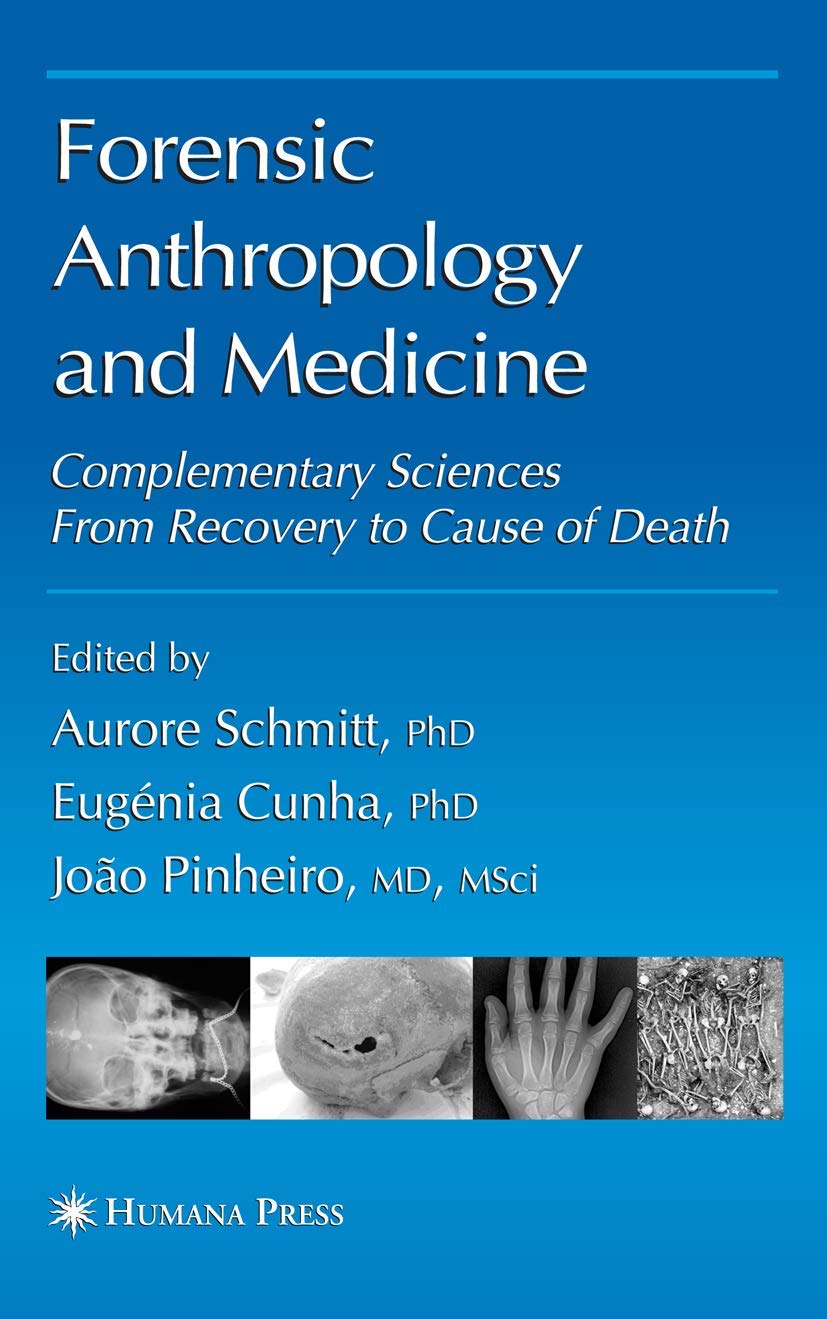Forensic Anthropology and Medicine: Complementary Sciences From Recovery to Cause of Death
Forensic Anthropology and Medicine: Complementary Sciences From Recovery to Cause of Death is backordered and will ship as soon as it is back in stock.
Couldn't load pickup availability
Genuine Products Guarantee
Genuine Products Guarantee
We guarantee 100% genuine products, and if proven otherwise, we will compensate you with 10 times the product's cost.
Delivery and Shipping
Delivery and Shipping
Products are generally ready for dispatch within 1 day and typically reach you in 3 to 5 days.
Author: Schmitt, Aurore
Brand: Humana Press
Edition: 2006 ed.
Binding: hardcover
Number Of Pages: 480
Release Date: 01-06-2006
Details: Product Description
Recent political, religious, ethnic, and racial conflicts, as well as mass disasters, have significantly helped to bring to light the almost unknown dis- pline of forensic anthropology. This science has become particularly useful to forensic pathologists because it aids in solving various puzzles, such as id- tifying victims and documenting crimes. On topics such as mass disasters and crimes against humanity, teamwork between forensic pathologists and for- sic anthropologists has significantly increased over the few last years. This relationship has also improved the study of routine cases in local medicolegal institutes. When human remains are badly decomposed, partially skelet- ized, and/or burned, it is particularly useful for the forensic pathologist to be assisted by a forensic anthropologist. It is not a one-way situation: when the forensic anthropologist deals with skeletonized bodies that have some kind of soft tissue, the advice of a forensic pathologist would be welcome. Forensic anthropology is a subspecialty/field of physical anthropology. Most of the background on skeletal biology was gathered on the basis of sk- etal remains from past populations. Physical anthropologists then developed an indisputable “know-how”; nevertheless, one must keep in mind that looking for a missing person or checking an assumed identity is quite a different matter. Pieces of information needed by forensic anthropologists require a higher level of reliability and accuracy than those granted in a general archaeological c- text. To achieve a positive identification, findings have to match with e- dence, particularly when genetic identification is not possible.
Review
"... an important contribution to the rapidly growing literature in forensic anthopology ..." - International Journal of Osteoarchaeology
"...a detailed guide to the techniques involved in analyzing and interpreting skeletal remains in a medicolegal context." -Canadian Society of Forensic Science Journal
From the Back Cover
The aim of this book is to dissect forensic anthropology and forensic pathology in its various and valuable contributions to contemporary society. It gives answers and approaches key questions to this sciences' growing audience within different countries in the recent years. It aims to provide a practical approach to the investigation of bodies that are not fresh enough to be considered a normal forensic case. The specialists of both areas can have in a single book the useful tools and practical recommendations of these specialities (forensic anthropology and forensic pathology) that are spread among other textbooks.
It proposes original, illustrated, and updated articles on the four parameters of the biological profile; it discusses the factors of individualization; it explains the decay process of a body and the relevance of each step for forensic sciences, providing a useful approach to investigate such corpses; it reviews bone trauma; it facilitates the access to a number of international organizations and protocols related with the subject; and it compares the perspectives of expertises from different countries, namely Europe, North America, and Latin America. The majority of the authors found in this volume have quite a lot of experience with the subjects that they discuss. Finally, this book provides a bridge between forensic anthropology and forensic pathology, and brings practical advice from physical anthropology.
Forensic Anthropology and Medicine: Complementary Sciences From Recovery to Cause of Death presents both forensic anthropology and forensic pathology in their various and valuable contributions to contemporary society. Providing original, illustrated, and updated articles on the four parameters of the biological profile, this text encompasses the factors of individualization; the decay process of a body and the relevance of each step for forensic sciences; bone trauma; access to a nu
EAN: 9781588298249
Package Dimensions: 9.3 x 6.3 x 1.2 inches
Languages: English





